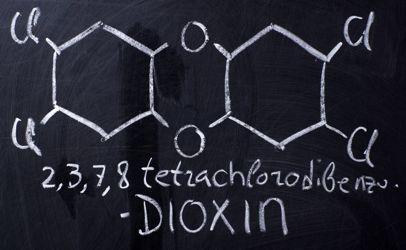FSIS set to begin dioxin analysis of U.S. meat, poultry
Federal agencies are set to begin a year-long testing program on U.S. beef, pork and poultry to measure the levels of a highly toxic group of chemicals called dioxins, which are best known for their use in Agent Orange and other herbicides.
 The 2018 Dioxin Survey, headed by the USDA’s Food Safety and Inspection Services (FSIS), will be done in conjunction with the federal Agricultural Research Service (ARS), and the Red River Valley Agricultural Research Center in Fargo, ND.
The 2018 Dioxin Survey, headed by the USDA’s Food Safety and Inspection Services (FSIS), will be done in conjunction with the federal Agricultural Research Service (ARS), and the Red River Valley Agricultural Research Center in Fargo, ND.
This is the fourth such survey in a recurring five-year cycle. The FSIS collaborates with federal partners including ARS, the Environmental Protection Agency and the Food and Drug Administration. The previous dioxin surveys were done in 2003, 2008 and 2013.
Dioxins are a group of compounds that are of public health concern, according to the U.S. National Institutes of Health, the EPA, the World Health Organization and other public health agencies. The chemicals are widely found, but generally at very low levels, throughout the natural environment.
The EPA banned the use of dioxin in herbicides in 1979 after reviewing evidence of its danger to humans, particularly from the widespread use of it by the U.S. military in Vietnam. Also, herbicides containing dioxin were very popular with U.S. farmers to clear fields of broadleaf weeds, which increased crop yields and cleared the way for grass to grow.
Today, for people in the United States, the main exposure vehicle is food, according to the NIH and WHO. Dioxins are absorbed and stored in animals’ fat tissues and, therefore, accumulate in the food chain, according to the National Institutes of Health. More than 90 percent of human exposure is through food, the health agency reports.
“More than 90 percent of human exposure to dioxins is through the food supply, mainly meat and dairy products, fish and shellfish,” according to the World Health Organization. “Therefore, protecting the food supply is critical. … secondary contamination of the food supply needs to be avoided throughout the food chain.”
 Contaminated animal feed is often the root-cause of dioxin contamination of food, according to U.S. and international health agencies.
Contaminated animal feed is often the root-cause of dioxin contamination of food, according to U.S. and international health agencies.
ARS and FSIS will analyze the data collected to continue to monitor dioxin levels in animal fats and evaluate trends in dioxin levels in livestock and poultry. These data will be used to detect and identify possible sources of dioxin in the food supply and to determine whether regulatory actions by FDA and EPA are warranted.
The agency will advise management of various establishments that they may be selected for sampling, beginning June 1. Inspection program personnel will collect half a pound of fat tissue – and in some cases an equal amount of liver tissue – and record all animal identification information as part of the sampling task from the slaughter classes of steers, heifers, dairy cows, market swine, young chickens and young turkeys, as assigned.
Individual sample results will not be the basis for regulatory actions, and carcasses selected for sampling under the project do not need to be held pending test results reporting.
Inspection program personnel will have 37 days from the date of the sample request to collect and ship samples to the ARS laboratory.
The inspection personnel are to randomly select animals for sampling from those that have passed ante-mortem inspection and appear healthy.
Upon completion of the annual survey, FSIS will summarize and publish the survey results as an official report that will be accessible on the FSIS Web site. Individual plant results will not be published.
According to the NIH, dioxin is known to cause cancer in laboratory animals. Additionally, dioxin exposure has been linked to a number of other diseases, including type 2 diabetes, ischemic heart disease, and an acne-like skin disease called chloracne, a hallmark of dioxin exposure.
“Dioxins can cause developmental problems in children, lead to reproductive and infertility problems in adults, result in miscarriages, damage the immune system, and interfere with hormones,” according to NIH.
The EPA reports that dioxins are “extremely persistent compounds and break down very slowly. In fact, a large part of the current exposures to dioxins in the US is due to releases that occurred decades ago.”
Research by the Aspen Institute has shown that dioxin buried or leached under the surface or deep in the sediment of rivers and other bodies of water can have a half-life of more than 100 years.
No comments:
Post a Comment